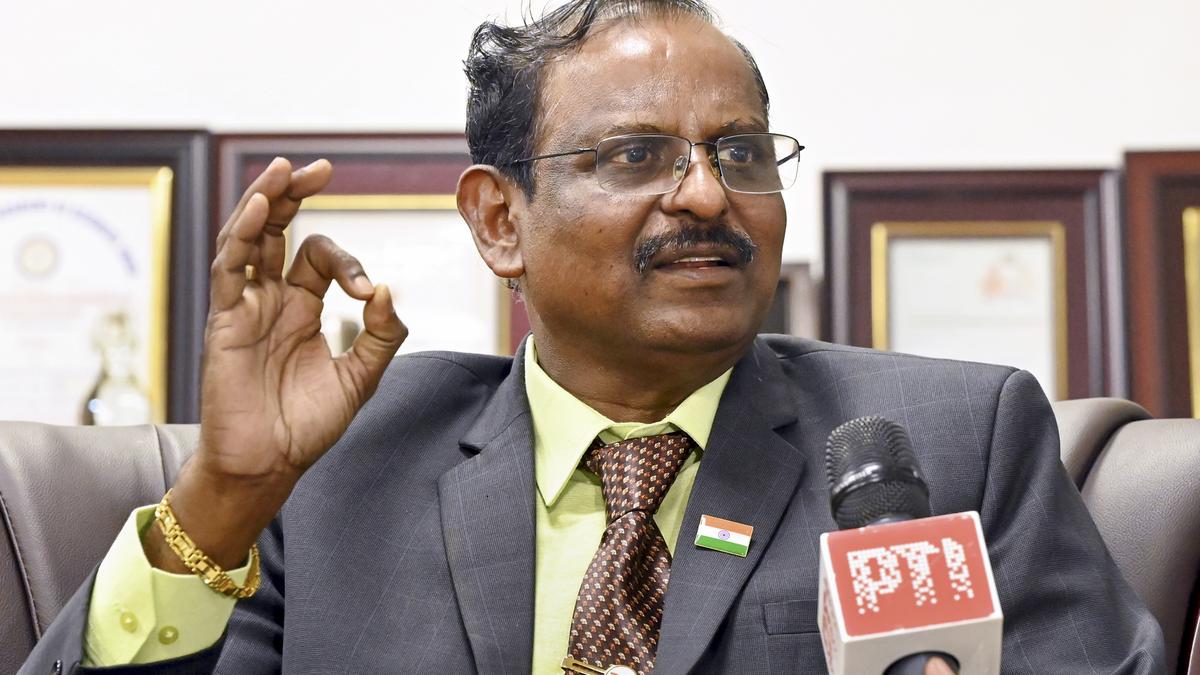ISRO Chairman V Narayanan in Thiruvananthapuram on Friday.
| Photo Credit: PTI
The Indian Space Research Organisation (ISRO) is aiming for a 2027 launch for its first LVM3 launch vehicle equipped with a semi-cryogenic propulsion stage.
“Right now we are on track. The power head tests (on the engine) are progressing with great success. Five to six tests have been completed. We have set the launch target for the first quarter of 2027,” ISRO Chairman V. Narayanan said during a visit to Thiruvananthapuram.
Formerly known as the Geosynchronous Satellite Launch Vehicle Mk III (GSLV Mk III), the three-stage LVM3 had its first experimental flight in December, 2014. It is ISRO’s most powerful rocket to date. The semi-cryogenic stage is designed to make it even more formidable, enhancing payload capability while keeping costs down, Mr. Narayanan said.
Currently capable of lifting 4200 kg payloads to the geosynchronous transfer orbit (GTO), the LVM3 will see significant changes when it is fitted with the semi-cryogenic stage. The L110 core stage, which uses liquid propellant, will be replaced by the semicryo stage which uses a propellant combination of refined kerosene and liquid oxygen (LOX). The propellant loading in the cryogenic upper stage, which uses a Liquid Hydrogen-LOX combination, will increase from 28 tonnes to 32 tonnes.
“The current payload capability of 4200 kg to GTO will increase to 5200 kg with this combination of semi-cryogenic stage and upgraded cryogenic propulsion in the upper stage. The cost of placing the satellite in orbit will come down by 25%,” Mr. Narayanan said. The development of the upper stage enhanced to carry 32 tonnes of cryogenic propellant has been completed.
‘Very complex engine’
ISRO’s semi-cryogenic engine has been in the works for a long time now. Mr. Narayanan described it as a “very complex engine” that uses special materials to withstand high temperatures and oxidiser-rich combustion. Whereas the liquid-fuelled Vikas engine used in the L110 stage gives a nominal thrust of 80 tonnes, the SE2000 semi-cryogenic engine being developed by ISRO is designed to supply 200 tonnes, he said.
Once perfected, the semi-cryogenic engines will see use in ISRO’s future launch vehicles as well.
The Liquid Propulsion Systems Centre (LPSC) of ISRO is tasked with developing the semi-cryogenic engine and the stage. Prime Minister Narendra Modi had dedicated the Semi-cryogenic Integrated Engine and Stage Test Facility (SIET) at the ISRO Propulsion Complex (IPRC) at Mahendragiri, Tamil Nadu, in February 2024.
Published – August 02, 2025 05:39 pm IST
